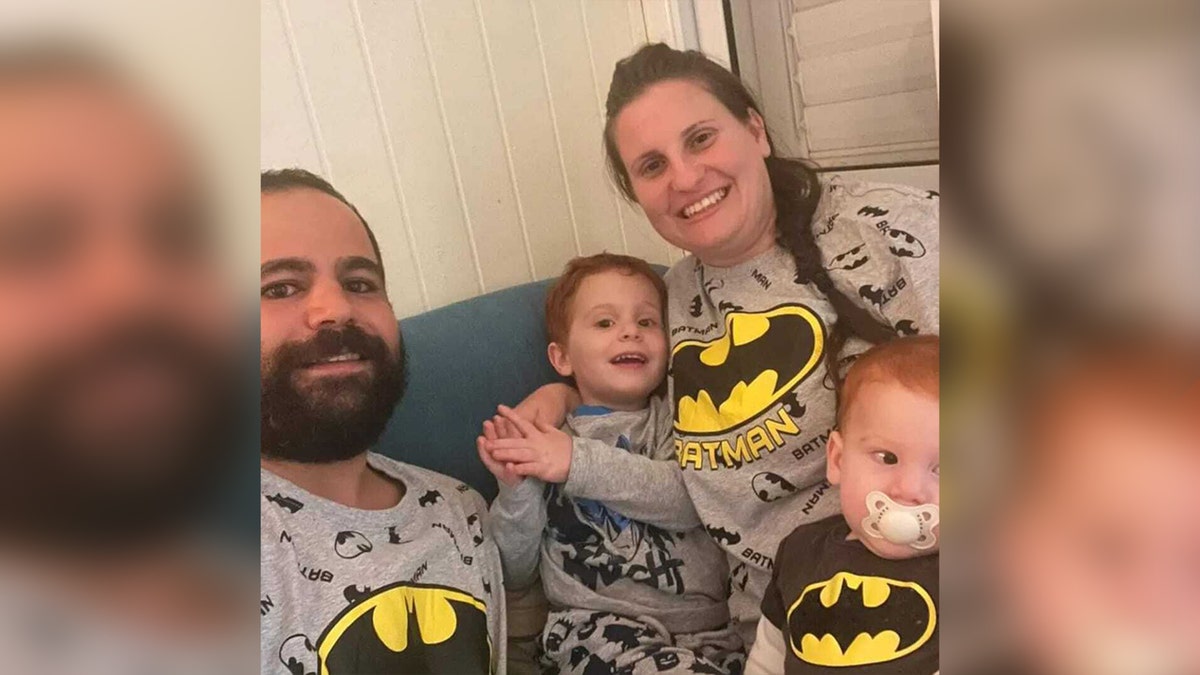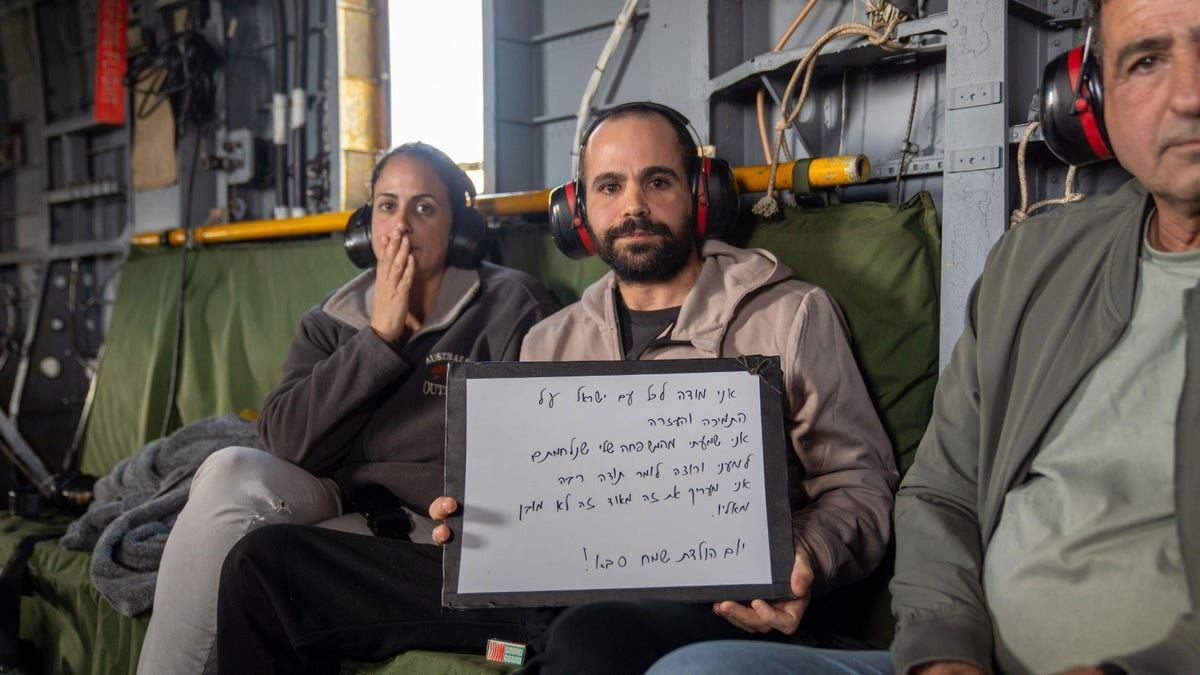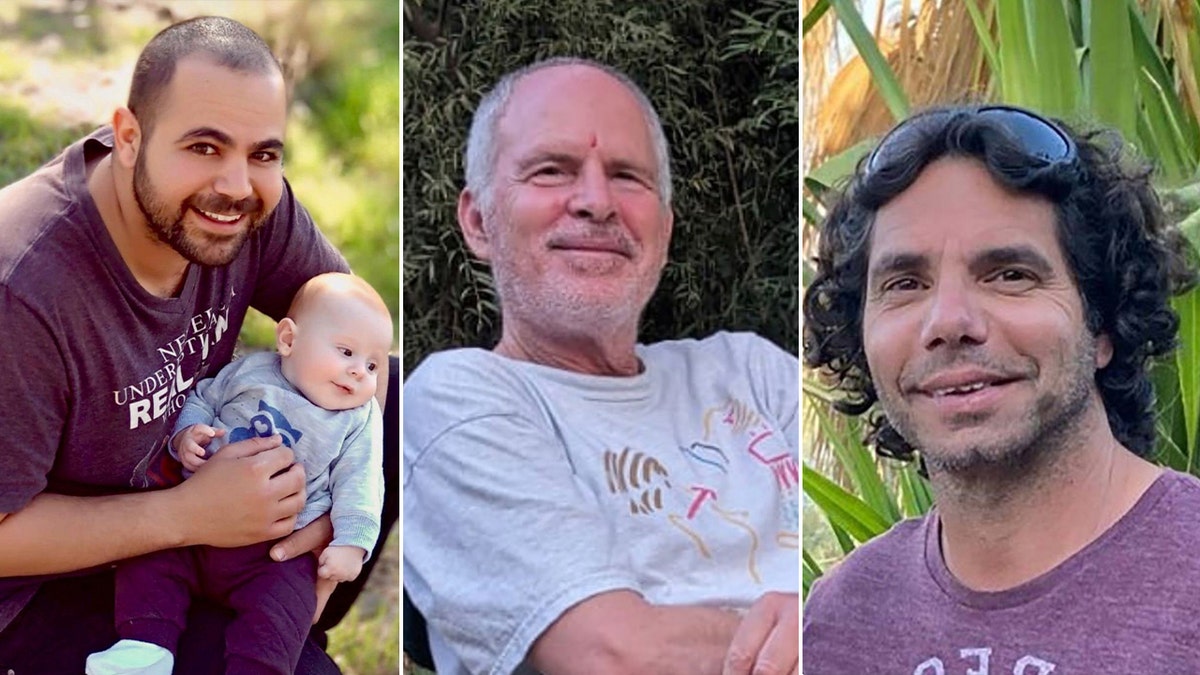Yarden Bibas has finally returned to Israel after being forcibly taken from his home in Kibbutz Nir Oz by Hamas militants over 480 days ago. Despite his long-awaited return, the situation is tinged with sadness as his wife, Shiri, along with their two young children, Ariel and Kfir, are still being held in Gaza with their well-being unknown. The Israel Defense Forces (IDF) have expressed serious concerns about their safety.
Israeli Prime Minister Benjamin Netanyahu celebrated Yarden Bibas’ return, while saying the nation’s thoughts are with Shiri, Ariel and Kfir Bibas.
Prime Minister Netanyahu stated, “Our thoughts are currently with Shiri, Ariel, and Kfir Bibas, as well as all our other missing citizens. Our efforts to bring them back home will persist.”

The Bibas family, from left: Yarden, Ariel, Shiri, and Kfir (Ofri Bibas Levy)
Israeli President Isaac Herzog also commented on Yarden’s release, calling it “heartbreaking.”
President Herzog also shared his sentiments, saying, “The reunion of Yarden with his family is undeniably heart-wrenching. Our worries for the safety and welfare of Shiri, Ariel, and Kfir Bibas weigh heavily on our hearts as a nation. The Israeli people stand in solidarity with Yarden and his family, offering our support and heartfelt prayers during this difficult time.”
The Hostages and Missing Families Forum also celebrated Yarden Bibas’ return, and vowed to continue demanding that his wife and two sons be released.
Early Saturday, Bibas was freed alongside American-Israeli Keith Siegel and French-Israeli Ofer Kalderon in the fourth round of hostage releases as part of phase one of Israel and Hamas’ ongoing ceasefire deal.
“From the moment Hamas launched its barbaric attack on October 7th, we have remained committed to one mission—bringing every hostage home,” IDF International Spokesperson Lt. Col. Nadav Shoshani wrote on Substack. “We cannot and will not forget for a moment, the 79 hostages that remain in Hamas captivity.”

Yarden Bibas with his sister and father on board IDF helicopter on his way to hospital. The sign says” Thank you to all the people of Israel. I heard from my family that you have fought for my release I want to thank you. I appreciate it. Happy Birthday Saba (Grandfather!)” (IDF)
The release of Bibas, Siegel and Kalderon looked different from previous hostages’ releases, which saw shocking scenes of crowds mobbing the captives as they were transferred to the Red Cross. This change is likely due to Netanyahu’s demand that mediators guarantee the hostages safe exits following the chaotic scenes.
While in captivity, Bibas was forced to make a hostage film in which he was seen breaking down as Hamas claimed his wife and children had been killed. Hamas often uses these types of videos as part of what the IDF calls “psychological terror.” However, the terror organization included Shiri, Kfir and Ariel on the list of 33 hostages set to be released in the first phase of the ceasefire deal.
Upon his release, Yarden’s family said that “a quarter of our heart has returned to us after 15 long months… Yarden has returned home, but the home remains incomplete.”

Hamas has named Yarden Bibas, Keith Siegel and Ofer Kalderon as the next three hostages to be released. (The Hostages and Missing Families Forum)
As images and videos of Hamas’ brutal attacks on Oct. 7 began to spread, the Bibas family quickly became a symbol of the terror group’s cruelty. A video of Shiri Bibas holding her two red-headed children in her arms was spread across the globe. Those calling for the Bibas’ family’s release often used the color orange to symbolize the infant and toddler’s bright red hair.
At the time of their kidnapping, Kfir was 9 months old and Ariel was 4 years old. They are the only child hostages remaining in Gaza. Ariel is now 5 years old and Kfir marked his second birthday in Hamas captivity, where he has spent his two and only birthdays.
As of Saturday, 79 hostages remain in Gaza, 35 of whom have been declared dead and whose bodies remain in the hands of Hamas. Keith Siegel, who was freed on Saturday, is the first Israeli-American to be released. There are still six American citizens in Gaza, only two of whom are believed to be alive.

















